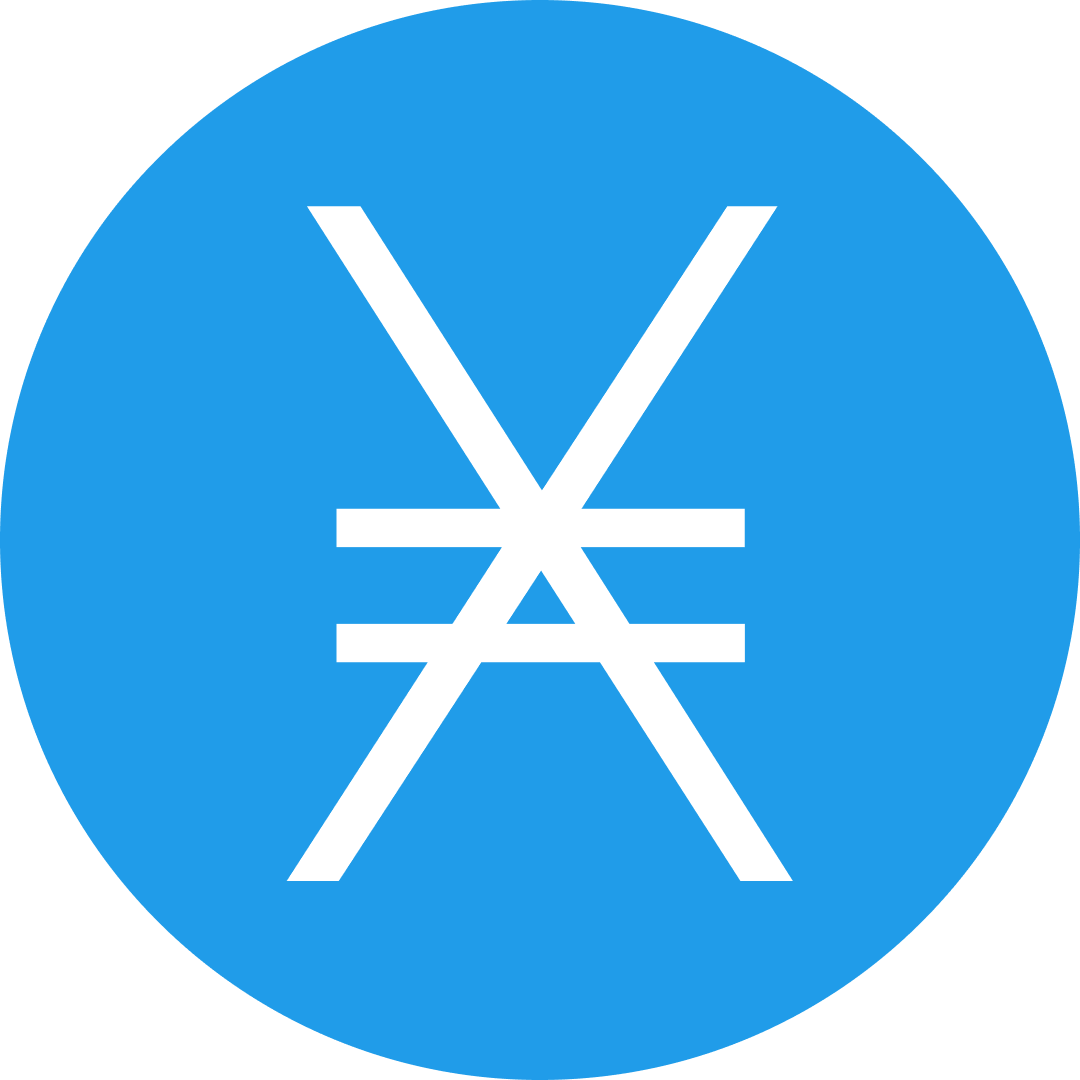-
 bitcoin
bitcoin $107015.826941 USD
-2.18% -
 ethereum
ethereum $3637.352324 USD
-5.18% -
 tether
tether $0.999831 USD
-0.02% -
 xrp
xrp $2.338078 USD
-6.23% -
 bnb
bnb $998.272150 USD
-6.97% -
 solana
solana $167.598257 USD
-10.12% -
 usd-coin
usd-coin $0.999863 USD
0.01% -
 tron
tron $0.282573 USD
-5.09% -
 dogecoin
dogecoin $0.169891 USD
-7.39% -
 cardano
cardano $0.557554 USD
-7.03% -
 hyperliquid
hyperliquid $39.914802 USD
-5.85% -
 chainlink
chainlink $15.414549 USD
-9.97% -
 bitcoin-cash
bitcoin-cash $510.361911 USD
-4.26% -
 ethena-usde
ethena-usde $0.999194 USD
-0.03% -
 stellar
stellar $0.282092 USD
-6.07%
From living expenses to the first pot of gold: short-term arbitrage skills of digital currencies
Short-term arbitrage in digital currencies can cover living expenses and build wealth by exploiting price differences across exchanges.
May 31, 2025 at 02:56 am
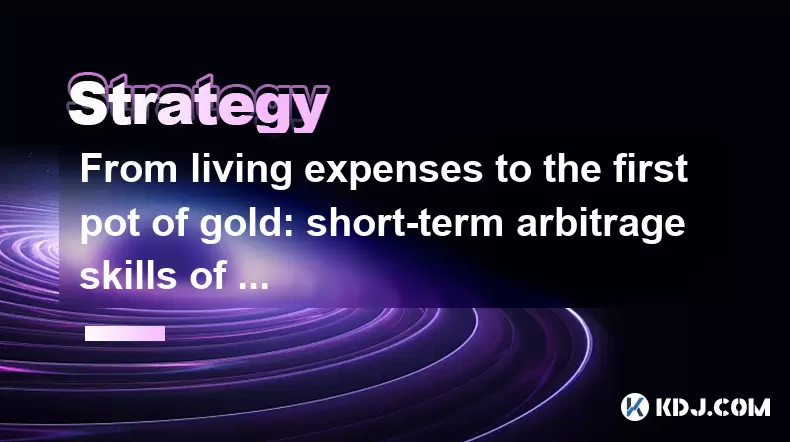
From living expenses to the first pot of gold: short-term arbitrage skills of digital currencies
The world of digital currencies offers a plethora of opportunities for those looking to turn a profit. One of the most intriguing strategies for newcomers and seasoned traders alike is short-term arbitrage. This technique involves capitalizing on price differences of the same asset across different exchanges or markets. In this article, we will delve into the essentials of short-term arbitrage, exploring how it can be used to cover living expenses and potentially accumulate your first pot of gold.
Understanding Short-Term Arbitrage
Short-term arbitrage is the practice of buying a digital currency on one exchange where the price is lower and simultaneously selling it on another exchange where the price is higher. The key to this strategy is speed and efficiency, as price discrepancies can be fleeting. The goal is to profit from the difference in prices before they equalize across markets.
To successfully engage in short-term arbitrage, one must have a thorough understanding of the various exchanges, their fee structures, and the speed at which transactions are processed. It's also crucial to monitor market conditions continuously, as they can change rapidly.
Setting Up for Short-Term Arbitrage
Before diving into short-term arbitrage, you need to set up the necessary tools and accounts. Here’s how you can prepare:
Choose reliable exchanges: Select exchanges that are known for their liquidity and reliability. Popular choices include Binance, Coinbase Pro, and Kraken. Ensure that the exchanges you choose support the digital currencies you plan to trade.
Open accounts: Register and verify your identity on the chosen exchanges. This process may take a few days, so plan accordingly.
Fund your accounts: Deposit funds into your exchange accounts. It’s advisable to start with a small amount to get a feel for the process before scaling up.
Use arbitrage software: Consider using specialized software that can help identify price discrepancies in real-time. Tools like Crypto Arbitrage Tracker or ArbiTool can streamline the process.
Identifying Arbitrage Opportunities
The heart of short-term arbitrage lies in spotting price differences quickly. Here are some strategies to help you identify these opportunities:
Monitor multiple exchanges: Use a dashboard or multiple browser tabs to keep an eye on the prices of your target digital currencies across different exchanges.
Set up price alerts: Many trading platforms and third-party apps allow you to set price alerts. This way, you’ll be notified as soon as a significant price discrepancy occurs.
Focus on high-volume pairs: Trading pairs with high trading volumes are more likely to have consistent liquidity, making it easier to execute trades quickly.
Executing Arbitrage Trades
Once you’ve identified a price discrepancy, the next step is to execute the trade. Here’s a detailed guide on how to do it:
Buy low: On the exchange where the price is lower, place a buy order for the digital currency. Make sure to account for any fees that might affect your profit margin.
Sell high: Simultaneously, on the exchange where the price is higher, place a sell order for the same amount of the digital currency. Again, consider the fees associated with the transaction.
Transfer funds: If the exchanges are not connected, you may need to transfer the digital currency from one exchange to another. Be aware that transfer times can vary, and this could impact your arbitrage window.
Calculate profits: After completing the trades, calculate your net profit by subtracting the costs (including fees and transfer costs) from the revenue generated from the sell order.
Managing Risks in Short-Term Arbitrage
While short-term arbitrage can be lucrative, it comes with its own set of risks. Here are some strategies to manage these risks effectively:
Understand market volatility: Digital currency markets can be highly volatile. Be prepared for sudden price swings that could erase potential profits.
Diversify: Don’t put all your funds into a single arbitrage opportunity. Spread your investments across multiple trades to mitigate risk.
Stay informed: Keep up with news and developments in the digital currency space. Regulatory changes or security breaches can impact the viability of certain exchanges.
Use stop-loss orders: Consider using stop-loss orders to limit potential losses if the market moves against your position.
From Living Expenses to the First Pot of Gold
Short-term arbitrage can be an effective way to generate income to cover living expenses. By consistently identifying and executing arbitrage opportunities, you can create a steady stream of income. Here’s how you can scale up to build your first pot of gold:
Reinvest profits: Instead of withdrawing all your profits, consider reinvesting a portion back into your arbitrage activities. This can help you scale up your operations and increase your potential returns.
Increase trading volume: As you become more comfortable with the process, you can gradually increase the volume of your trades. Higher volumes can lead to larger profits, but they also come with increased risk.
Diversify your strategies: Don’t rely solely on short-term arbitrage. Consider other trading strategies like day trading or swing trading to diversify your income sources.
Educate yourself continuously: The digital currency market is constantly evolving. Stay informed about new tools, strategies, and market trends to keep your edge.
Frequently Asked Questions
Q: Can short-term arbitrage be done with any digital currency?A: While it’s possible to perform short-term arbitrage with any digital currency, it’s most effective with highly liquid assets like Bitcoin and Ethereum. These currencies have high trading volumes, making it easier to execute trades quickly and at favorable prices.
Q: How much capital is needed to start with short-term arbitrage?A: The amount of capital required can vary, but it’s advisable to start with a small amount, such as $100 to $500, to get a feel for the process. As you gain experience and confidence, you can gradually increase your investment.
Q: Are there any legal considerations for short-term arbitrage?A: Yes, it’s important to be aware of the legal and regulatory environment in your jurisdiction. Some countries have specific rules regarding digital currency trading and arbitrage. Always ensure you are in compliance with local laws and regulations.
Q: How can I minimize the impact of transaction fees on my arbitrage profits?A: To minimize the impact of transaction fees, choose exchanges with lower fee structures, use high-volume trading pairs, and consider using arbitrage software that can help optimize your trades for maximum efficiency. Additionally, always factor in the fees when calculating potential profits to ensure you’re making a worthwhile trade.
Disclaimer:info@kdj.com
The information provided is not trading advice. kdj.com does not assume any responsibility for any investments made based on the information provided in this article. Cryptocurrencies are highly volatile and it is highly recommended that you invest with caution after thorough research!
If you believe that the content used on this website infringes your copyright, please contact us immediately (info@kdj.com) and we will delete it promptly.
- Sequans, Bitcoin, and Debt Reduction: A NYC Perspective on a Bold Move
- 2025-11-05 03:50:12
- XRP Price Wobbles: Death Cross Looms as Ripple Token Navigates Choppy Waters
- 2025-11-05 04:10:01
- Altcoins, Perpetual Tokens, and ETH Price: Navigating the Crypto Current
- 2025-11-05 03:55:01
- Tether's Triumph: $10 Billion Profits and a Treasury Milestone
- 2025-11-05 03:55:12
- Crypto Coins with Growth Potential: Unearthing 2025's Hidden Gems
- 2025-11-05 04:00:01
- MoonBull, Crypto Presales, and Solana WLFI: Riding the Wave to Big Gains
- 2025-11-05 03:25:02
Related knowledge
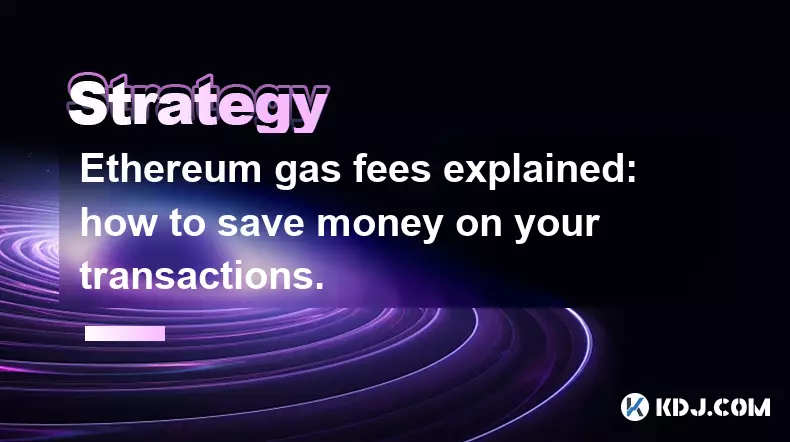
Ethereum gas fees explained: how to save money on your transactions.
Nov 04,2025 at 04:01pm
Ethereum Gas Fees: Understanding the Basics1. Ethereum operates on a decentralized network where every transaction requires computational power to exe...
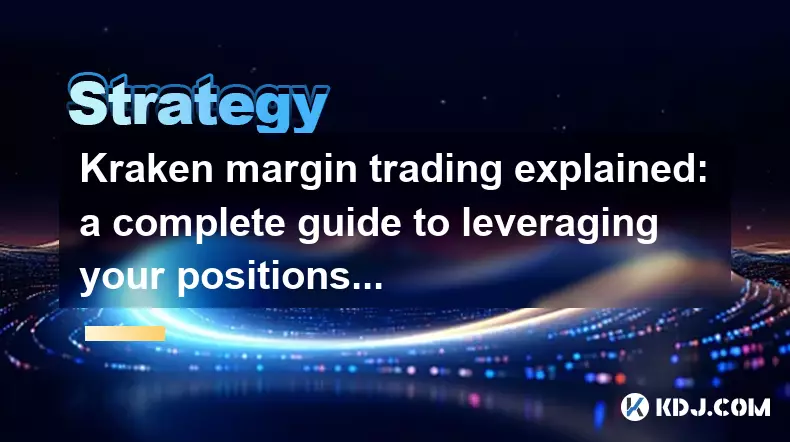
Kraken margin trading explained: a complete guide to leveraging your positions.
Nov 04,2025 at 02:19pm
Kraken Margin Trading Overview1. Kraken is one of the most established cryptocurrency exchanges offering margin trading to experienced traders seeking...

NFT flipping for beginners: a step-by-step guide to profitable trading.
Nov 02,2025 at 11:54pm
NFT Flipping Basics: Understanding the Market1. NFT flipping involves purchasing non-fungible tokens at a lower price and reselling them for profit, o...
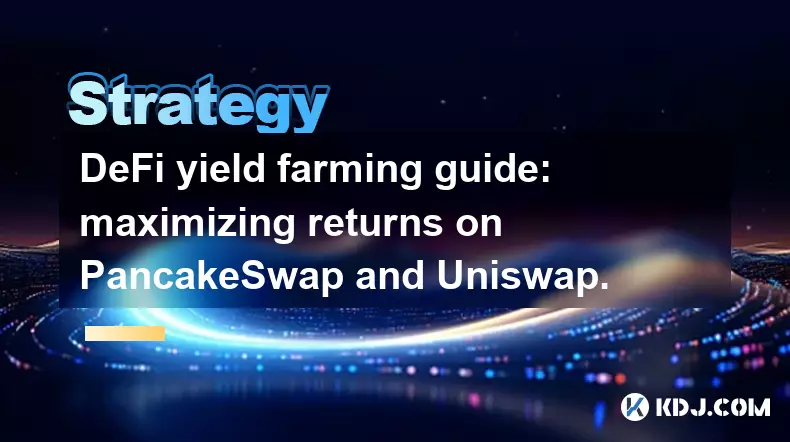
DeFi yield farming guide: maximizing returns on PancakeSwap and Uniswap.
Nov 05,2025 at 12:20am
Understanding Yield Farming on PancakeSwap and Uniswap1. Yield farming has become a central activity in the decentralized finance (DeFi) space, allowi...

How to find the next 100x altcoin: a fundamental analysis checklist.
Nov 02,2025 at 09:54pm
Decentralized Exchanges Are Reshaping Trading Dynamics1. Decentralized exchanges (DEXs) have emerged as a powerful alternative to centralized platform...
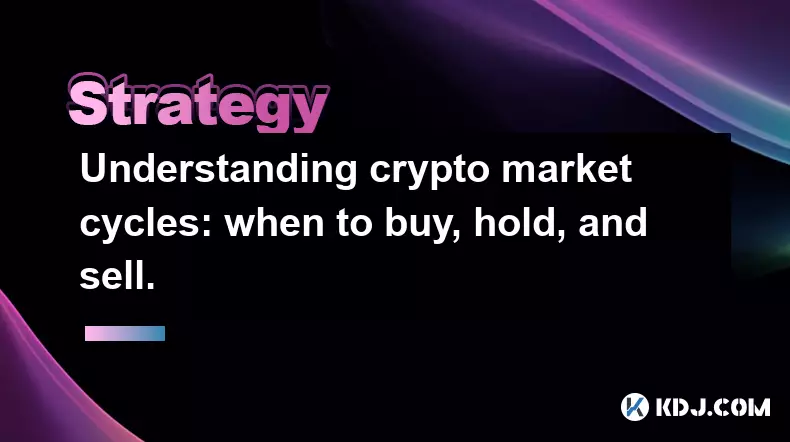
Understanding crypto market cycles: when to buy, hold, and sell.
Nov 02,2025 at 11:19am
Decoding the Rhythm of Crypto Market Cycles1. The cryptocurrency market operates in recurring phases marked by predictable psychological and financial...

Ethereum gas fees explained: how to save money on your transactions.
Nov 04,2025 at 04:01pm
Ethereum Gas Fees: Understanding the Basics1. Ethereum operates on a decentralized network where every transaction requires computational power to exe...

Kraken margin trading explained: a complete guide to leveraging your positions.
Nov 04,2025 at 02:19pm
Kraken Margin Trading Overview1. Kraken is one of the most established cryptocurrency exchanges offering margin trading to experienced traders seeking...

NFT flipping for beginners: a step-by-step guide to profitable trading.
Nov 02,2025 at 11:54pm
NFT Flipping Basics: Understanding the Market1. NFT flipping involves purchasing non-fungible tokens at a lower price and reselling them for profit, o...

DeFi yield farming guide: maximizing returns on PancakeSwap and Uniswap.
Nov 05,2025 at 12:20am
Understanding Yield Farming on PancakeSwap and Uniswap1. Yield farming has become a central activity in the decentralized finance (DeFi) space, allowi...

How to find the next 100x altcoin: a fundamental analysis checklist.
Nov 02,2025 at 09:54pm
Decentralized Exchanges Are Reshaping Trading Dynamics1. Decentralized exchanges (DEXs) have emerged as a powerful alternative to centralized platform...

Understanding crypto market cycles: when to buy, hold, and sell.
Nov 02,2025 at 11:19am
Decoding the Rhythm of Crypto Market Cycles1. The cryptocurrency market operates in recurring phases marked by predictable psychological and financial...
See all articles








































































